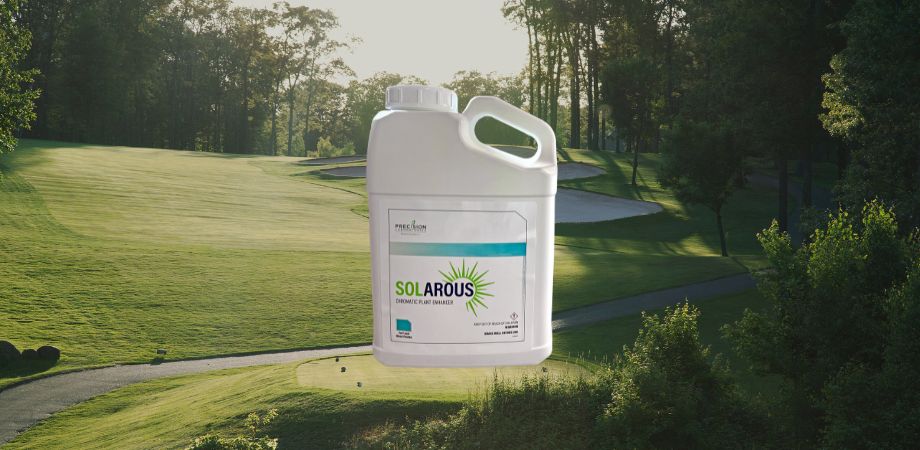Left unmanaged, native areas can become frustrating areas for golfers. They can easily grow out of control and make it impossible to find a ball that’s been hit into the rough. A well-managed native area, however, can enhance the aesthetics of a course and ultimately add to the golf experience. Naturalized roughs involve more maintenance than you might expect, including weed control to keep them looking pleasing to golfers.
Grasses commonly used for native areas, such as meadow fescue and big bluestem, are not typically listed on herbicide labels. That makes it challenging to know which products are safe to use on them. Some labels broadly list “native grass” or “naturalized grass area,” but you ultimately assume the risk for any off-label applications you make. Helpful things to look for on labels include the appropriate use site (golf courses) and use pattern (turf areas, ornamental plantings, wildflower areas, or something similar). Always test a small area before completing a large-scale application.
Not only are desirable grasses different in native areas, but common weeds also differ from what you find elsewhere on your course. Native areas typically have tall, unsightly crop weeds rather than low-growing turf weeds. These weeds are larger and more difficult to control, requiring both pre- and post-emergent weed control strategies. Native areas can have infestations of annual and perennial grassy and broadleaf weeds. Some common pests include barnyardgrass, foxtail, quackgrass, orchardgrass, spurge, ragweed, and thistle.
The most challenging situation to manage is when you’re trying to control grassy weeds with post-emergents in native grasses. Post-emergent herbicides such as Drive XLR8, Pylex, Segment II, or Acclaim Extra may control unwanted grasses but could also injure desirable grasses. That’s why it’s crucial to read the label and test them on a small area. Because there are so few choices of herbicides, you may have to resort to spot treatments and hand-pulling. In fine fescue areas, Segment II is a good option that is safe over the top of fine fescues.
Crabgrass is one common turf weed that also infests native areas and is controllable with pre-emergents. BASF has a herbicide called Pendulum AquaCap that fits well into native areas to prevent crabgrass and other annual grassy weeds. The formulation is designed to allow the active ingredient to move past heavy vegetation, grass clippings, and other organic debris to the target area. Pre-emergents tend to struggle to break through organic matter in naturalized areas but not Pendulum AquaCap.
In addition to herbicides, maintaining naturalized areas also involves cultural practices. Many superintendents like to mow native areas in the fall to clean them up so they don’t have to worry about it in the spring. If you do wait until spring, just don’t wait too long into the season when seedheads are forming. At that point, you could be mowing off the uniform seedheads that make naturalized areas visually appealing. Some courses even burn their naturalized areas in the spring or fall rather than mow, but many localities don’t allow burning.
With a combination of cultural and chemical solutions, you can maintain naturalized rough areas that golfers will appreciate rather than resent.
Kyle Miller
Technical Specialist, BASF












